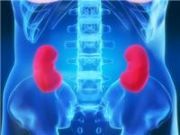Math Model Can Predict Severity of Kidney Damage in Lupus Patients
Researchers have developed a math model that can accurately predict the progression from nephritis to interstitial fibrosis in patients with systemic lupus erythematosus.

Researchers at The Ohio State University have developed a math model that can accurately predict the progression from nephritis to interstitial fibrosis in patients with systemic lupus erythematosus. Once this approach is further developed and validated, it would potentially eliminate the need for invasive kidney biopsies in this patient population. Currently, kidney biopsies are the only method for producing definitive diagnosis of the damage and its extent. Lupus nephritis develops in about 60 percent of patients with lupus.
A news release that accompanied publication of this research also noted the model could potentially be used to monitor the effectiveness of experimental treatments for inflammation and fibrosis.
The model “comprises a series of equations that account for the complex inflammatory process leading from nephritis to fibrosis in damaged kidneys.” It can detect the extent of kidney damage and predict how inflammatory processes will react to different therapies.
Lead author Avner Friedman, a Distinguished University Professor in The Ohio State University’s Department of Mathematics, said the math model will be used to improve “the design of clinical trials for new medications to treat the kidneys before they develop fibrosis… Establishing a dose of an experimental therapy is the most difficult part of testing new drugs. The model could give a starting point for an effective dose.”
Math modeling is becoming an important component of the biosciences. The news release noted that modeling “reduces the need for guesswork and time-consuming animal testing traditionally required as researchers pursue prevention, diagnosis and treatment of complex diseases. And in this case, math modeling would replace an invasive diagnostic test.”
Although this model needs further development, it performed quite well in the current study; “comparison with human patient data showed that levels of inflammatory proteins in the urine of patients with mild, moderate or severe fibrosis matched levels predicted by the model.”
Friedman said the model can simulate the scarring injury and detect how the damage would respond to the therapies that target specific pathways to disease — either the inflammatory process or the scarring itself. By identifying vulnerabilities in the process from inflammation to scarring, the model could even point to the cells and proteins that would be the most promising treatment targets.
Co-author Brad Rovin, professor and director of the division of nephrology at Ohio State’s Wexner Medical Center, said that “better management of kidney damage in lupus is an urgent medical need because patients with moderate or severe fibrosis are more likely to develop chronic or end-stage kidney disease.”
“If a kidney is already damaged, we can’t expect to go back in frequently to extract more tissue for multiple biopsies,” Rovin said.
The research was published in the online early edition of Proceedings of the National Academy of Sciences.